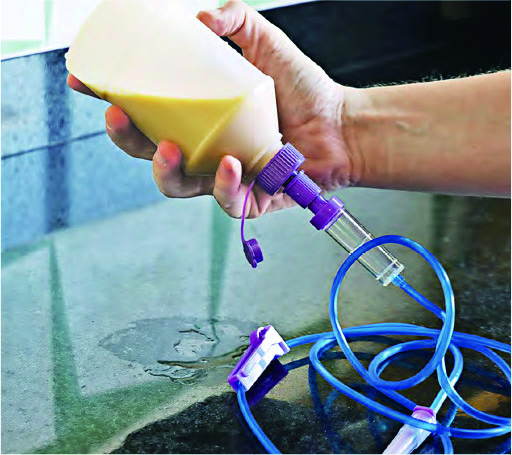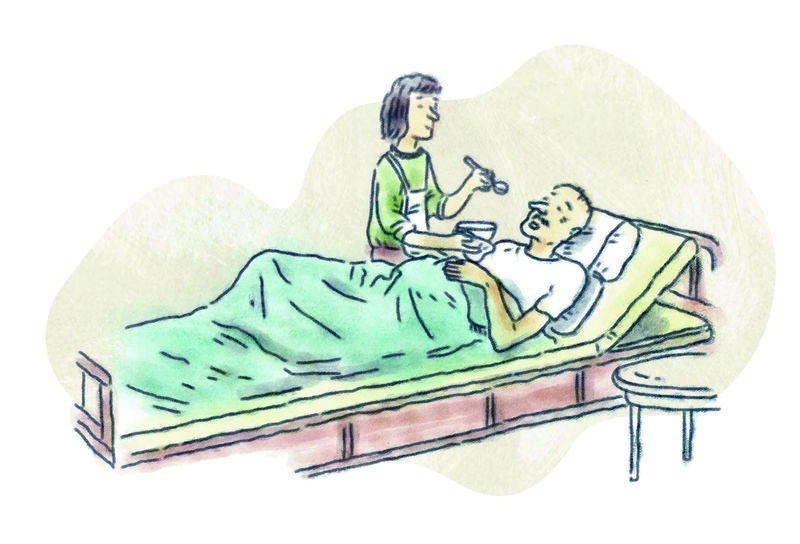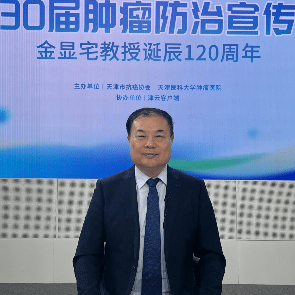[Wanqingyi Care]Relief feeding to maintain quality of life, allowing the dying to eat with dignity | Good Doctor
[ad_1]
As the saying goes, food is the most important thing for the people. Food is not only the basic need for survival, but also one of the enjoyments of life. But when reaching the end of life, patients and their families may need to choose between nasogastric tube feeding and relief feeding due to dysphagia due to different reasons such as aging and disease.
(Hong Kong News) Kanji Nohara, a Japanese doctor who studies swallowing function, believes that at the end of life, food is no longer to meet nutritional needs, but to communicate between people, and it can also become a farewell ceremony. We encourage everyone to think a little more for patients so that they can have choices and eat with dignity.
“Ah! Uncomfortable!” In the nursing home, the usually silent uncle suddenly shouted, with a painful expression on his face, and he spoke a sudden sentence with force. I looked back and saw that the nurse was inserting a nasogastric tube into him and preparing to feed him nutritional milk.
Immediately after the Chinese New Year, I started a one-week internship as a health care worker in a residential care facility. The first task of the internship is to “suck milk” for the frail elderly through the nasogastric tube. As a pioneer in making soft meals, I couldn’t help but ask myself whether I could change the fate of nasogastric tube feeding for the elderly?
I still remember that my grandmother expressed that she did not want to have a nasogastric tube inserted before she died. The family respected my grandmother’s wishes and did not insist on inserting a nasogastric tube. They just tried their best to maintain the physiological needs of my mother-in-law. They used moistened cotton swabs to moisturize her mouth and used human hands as much as possible. Feed until the day she leaves.
According to information from the Hospital Authority, patients who are temporarily or long-term unable to eat through the mouth, such as being unable to swallow after being comatose, having difficulty swallowing after a stroke, or suffering from tumors, need to use a nasogastric tube to transfer liquids Food passes through the esophagus directly to the stomach, allowing patients to get the nutrients they need.
I have seen that most of the elderly who are fed by nasogastric tubes are silent and lifeless. Because it is not comfortable at all to insert a nasogastric tube, patients will struggle, or even “pull out their throats” on their own. In order to prevent the elderly from removing the nasogastric tube, they cannot avoid the fate of being restrained in the end.

Effective feeding helps absorb water and nutrients
In recent years, many medical staff have become increasingly concerned about patients’ best interests and their quality of life. In addition to starting from a medical perspective, medical staff also consider the patient’s personal wishes and will recommend nutritional solutions other than nasogastric tubes and adopt “relief feeding” (also known as careful hand feeding and comfort feeding).
Some literature even pointed out that nasogastric tube feeding is not ideal. For example, it cannot reduce the risk of aspiration pneumonia in patients with advanced dementia, nor can it prolong life, improve quality of life, improve swallowing function, improve nutrient absorption, and avoid infection and stress. The formation of sores may even increase the chance of physical restraint, further reducing the patient’s quality of life.
Relief feeding not only does not increase the risk of aspiration pneumonia and death, but effective feeding can also help patients absorb water and nutrients.
According to statistics, a total of 79,000 people in Taiwan have been using nasogastric tubes for more than 3 months. The Taiwan Health Insurance Agency has long understood the shortcomings of long-term reliance on nasogastric tubes and the importance of restoring “oral feeding”, and launched the “Health Insurance Festival Incentive” in June 2022 to encourage the medical system to remove nasogastric tubes.
Successfully removed cases, with appropriate swallowing training and assessment, will receive 3,000 points (health insurance cost points, which can be used to pay for medical expenses) as a reward. The measure is expected to benefit 13,000 people with dysphagia every year.
Many speech therapists are more active in promoting and producing exquisite soft meals. They firmly believe in the concept of “oral feeding” originated from Japan, allowing people with dysphagia to choose the food they want to eat, and medical staff to determine the form and safety of the food. , allowing patients to regain the pleasure of eating. This kind of faith and determination is especially important to the elderly and patients in Wanqing.
Kanji Nohara, a doctor specializing in oral science at the Japanese Graduate School of Dentistry, believes that,
Faced with the unchangeable fact of death, “food” can bring life to the last stage of life.
He believed that at the end of life, food no longer serves to meet nutritional needs;
Rather, it becomes a kind of communication between people.
For the family of the dying person, food can become a farewell ritual.
We can take an extra step for patients who cannot eat.
From the perspective of their wishes, allow them to have choices and eat with dignity?

Nasogastric tube withdrawal after swallowing training Spare patients the pain of intubation
Patients with terminal dementia are often fed with nasogastric tubes due to difficulty swallowing, and a few patients are even fasted to death, which raises ethical issues in care.
However, in a hospice home team in Taipei City, three dementia patients who had nasogastric tubes inserted this year successfully removed the nasogastric tubes and switched to natural feeding after hard training by the hospital’s swallowing training team. This allows patients to avoid the pain of having a nasogastric tube inserted and enjoy delicious food.
A training group composed of 3 units
The hospice home team adopts cross-team services. The swallowing training team is composed of otolaryngologists, speech therapists and nutritionists. When a home-based dementia patient develops dysphagia, he or she can be accompanied by a home visit. The otolaryngologist uses a laryngoscope and laryngeal photography to evaluate the cause of the patient’s dysphagia and swallowing ability. The speech therapist from the rehabilitation department uses larynx and tongue massage for swallowing movements. Through training to restore the patient’s swallowing ability, the nutritionist provides pureed diets of different viscosities to allow the patient to swallow smoothly to avoid choking, and also prepares nutrients to provide the patient with nutrition.
In recent years, with the assistance of the swallowing training team, dementia patients with dysphagia at home have been able to recover part of their swallowing ability after swallowing training. They do not need to insert a nasogastric tube or delay the insertion of a nasogastric tube. For those who have already had a nasogastric tube inserted For dementia patients, the nasogastric tube can be removed after swallowing training, so that the patient can avoid suffering.
Enjoy delicious food and improve your mood
Zhang’s mother was 90 years old. She suffered from vascular dementia due to a stroke. During her hospitalization, she had difficulty swallowing and was fed with a nasogastric tube. When she was discharged from the hospital, the nasogastric tube was changed regularly at home. However, when An Ning Home took over, she discovered that every time she had a nasogastric tube inserted, The nasogastric tube would be uncomfortable and struggled hard, and the nasogastric tube would often be removed by oneself, so that the hospice home nurse would be exhausted going back and forth to the patient’s home to re-insert the nasogastric tube. In order to prevent self-removal of the nasogastric tube, it was replaced with a two-part nasogastric tube. , and restrained her hands; this made her with dementia more agitated and more difficult to care for.
So the team started a swallowing training group to help her with swallowing training. After two months of unremitting efforts, the nasogastric tube was finally removed and careful manual feeding began. This not only saved the elderly from suffering, but also allowed her to taste the delicious food and adopt natural feeding. Afterwards, the mood improved, the control of dementia was stabilized, and peaceful physical and mental care was achieved.
[ad_2]
Source link

![[Love Wants Sexual Happiness Series 358]Find the culprit and overcome psychogenic erectile dysfunction. Don’t let pressure affect your sexual happiness.](https://chinathenews.com/wp-content/uploads/2024/04/171111-780x420.jpg)

![[Wanqingyi Care]My health, my rights, customized medical methods in the last stage of life](https://chinathenews.com/wp-content/uploads/2024/04/ZZ1-100-780x420.jpg)
![[Kidney Transplantation Special Topic]The survival rate of transplanted kidneys is high without dialysis treatment three times a week](https://chinathenews.com/wp-content/uploads/2024/04/1311-780x420.jpg)



